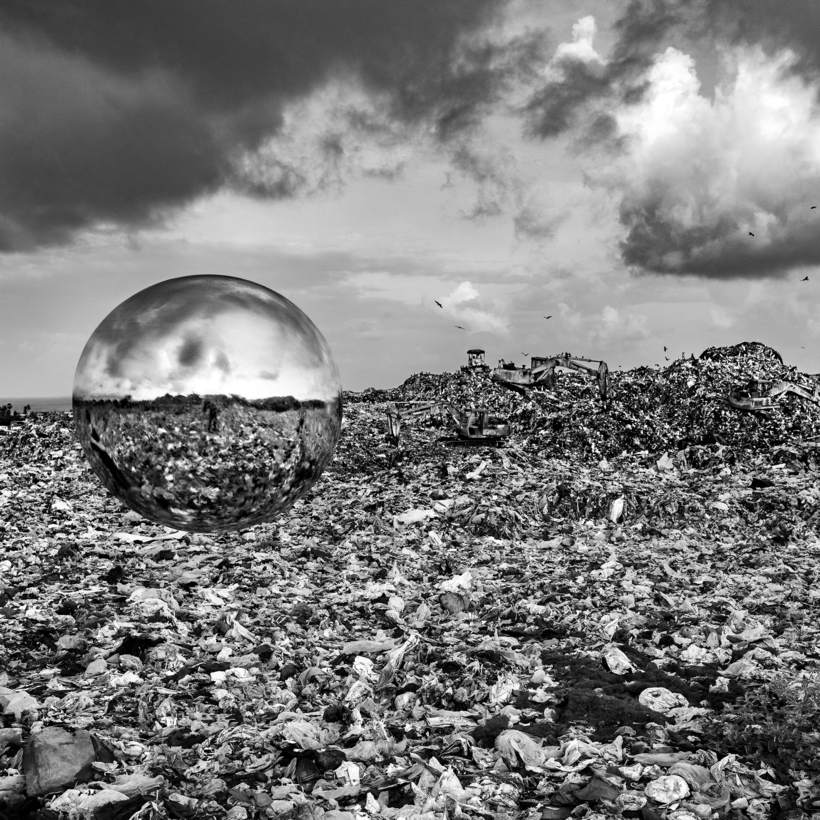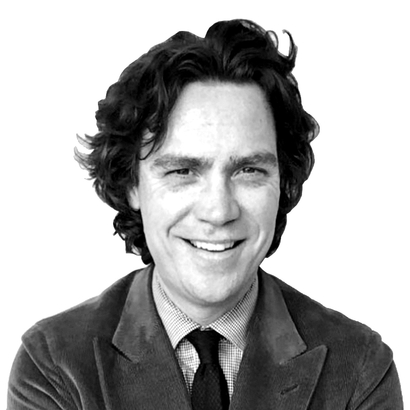Of the heavyweight photographers who wielded a camera back when magazine shoots were epic, advertising contracts were fat, supermodels were new, fashion was less about money than about creativity, and film had to be developed in a darkroom, Max Vadukul is one of the few who somehow protected his talent from being spoiled by too much good fortune.
It might have been tempting, for instance, having put a lasting imprint on one of the more difficult specialties of his chosen métier—the black-and-white portrait—to do just what he’d always done, especially since he could do it with one arm tied behind his back. He’d racked up the accolades (“You’re not an echo, you’re a voice,” Avedon told him), the hallowed ad gigs (Yohji Yamamoto, Romeo Gigli, Armani), the most coveted of magazine covers (French and Italian Vogue, Rolling Stone, Égoïste).

Along the way, he married the highly regarded stylist Nicoletta Santoro, and they had children, twins. Some days, in the evening, sitting in his garden, he took stock of it all while smoking one of his favorite cigars, a Hoyo No. 2.
But Vadukul has never been one to tarry.
He was, in some ways, born on the move—a Hindu boy between homes. The first was Nairobi, a waypoint between the India of his indentured ancestors and the London of his growing up. Then, as the self-taught photographer on the rise, it was Paris for a little while, followed by New York for a lot longer, and now, having logged a career of 38 years to date, Milan.

Vadukul’s wandering feet carried him from point to point, an immigrant and an artist on the hunt for his own voice. But it’s been the engine of his propulsive creativity that has continually pointed the compass of his fine, aquiline nose—the perch of a pair of heavy-framed specs—in the direction of new territory he’s not yet been.
He was, in some ways, born on the move—a Hindu boy between homes.
Photojournalism, the fashion world, glossy magazines, the sui generis New Yorker—these are not heights often scaled by people whose skin is a shade other than white. But Vadukul has used the experience from the times in his life when he felt ostracized for his Gujarati heritage—Manoj was his name until his classmates in grammar school decided it would be more fitting to call him Max—to channel the evil of prejudice into a refusal of the idea that the answer is for everyone to be the same.
The struggle of the artist is, after all, to be different. What that means at a young age is having to resist the temptation to emulate others; what it means later is having to resist the temptation to emulate yourself.

Vadukul’s vast body of work is an arc of fresh and forward discovery in which image after image somehow maintains the palpable sense of a split-second moment when yet another high-stakes concept of creative daredevilry gambles with failure to become a victory. In other words, for Vadukul, who knows that outdoing the world that doubted him means first outdoing himself, his newest project is just the kind of insane idea that makes perfect sense.
Bearing “Witness”
The catalyst for “The Witness,” a photo series chronicling India’s litter-and-pollution problem that goes on show today at the Fondazione Sozzani, in Milan, was a call from Che Kurrien, the editor of GQ India. For the 10th anniversary of the magazine, Kurrien gave Vadukul broad discretion in how he might approach a topic as big and controversial as climate change.
Now 61, Vadukul is infectiously upbeat, even though he closely follows just about every topic currently causing mankind to hurl four-letter words at each other. “I’m not a climate activist,” he says, explaining his take on the unbridgeable divide between the Greta Thunbergs of the world and, say, the spokesperson for ExxonMobil. “I document human behavior, and what I wanted to do was take something ugly, like garbage, and make it beautiful, so people would look at it closely, and then think, Maybe it’s not just ‘they’ who need to change their behavior but me too.”

The Italian phrase for “human pollution”—inquinamento umano—was an example of the irony he was after. “It’s a beautiful phrase for a very ugly reality.”
In the past, Vadukul—whose shoots Sting has described as “Dadaist performance art”—has, for humorous, tragicomic, or absurd effect, inserted foils into his photographs from time to time: a spitting llama, an armadillo, an alligator wrestler.
In this instance, the seriousness of the subject called for something more ambiguously present—a device that, like the convex mirror in Jan van Eyck’s Arnolfini Wedding, would, among other things, turn the gaze of the artist back on the viewer. After some weeks of hunting, Vadukul’s prop stylist located a shop in Essex, England, that made inflatable spheres coated with reflective paint. Vadukul ordered a supply of six, with a five-foot radius, shipped them to India, and placed one of these blankly watchful objects in each shot.

The GQ shoot took him to Mumbai, where he tracked down locations that would frame India’s predicament as the world’s second-most-populated country, and one of its most polluted, a place where 70 percent of the surface water is unfit for consumption. Even with a national ban that outlaws many types of single-use plastic items, the country is responsible for depositing some 90 percent of plastic debris in the world’s oceans.
From this trip came images of marigolds dumped onto a road, a mountain of them being gathered up by hand to be hauled away as garbage; ghostly sheets of illegal plastic, the polyethylene empire of a Jabba the Hutt–like character too ashamed to show his face; and a vast landfill, some 200 feet high, full of plastic bottles that—in a warning to those addicted to Evian who might be tempted to pass judgment—could very well be the jetsam of the West, many of whose countries have often paid India to take their trash.

“For that first picture, with the sphere, I stood there thinking, Shit, is this going to be a disaster?,” Vadukul says. But back in Milan, seeing the material he came away with—its depth of compassion, panoramic majesty, and objective, documentary tone—he felt the shots revealed fundamental truths about human behavior and the current state of the planet that, as works of art, couldn’t be dismissed as easily as the polarized bickering of climate czars, child activists, politicians, deniers, and virtue signalers.
“What I wanted to do was take something ugly, like garbage, and make it beautiful, so people would look at it closely, and then think, Maybe it’s not just ‘they’ who need to change their behavior but me too.”
Yet the story wasn’t complete. There was more to get on record with his camera, the pollution of overpopulation and the drawbacks that have coincided with India’s great economic success. The country has a massive appetite for concrete, which, as an industry, makes up 4 to 8 percent of global CO2 emissions, and a long-ingrained struggle to properly dispose of its wastewater and sewage.
Within a few months, Vadukul went back, traveling to Pune and Calcutta, where he captured, among other epic images, the hypnotic masterpiece on the cover of the exhibition catalogue, an impromptu snap of human bustle on a busy street with multiple layers of meaning. “It’s lunchtime for the taxi driver—the toxic ambassador—with the fake leopard interior,” Vadukul says. “Behind him is the perfect zero-carbon machine—a man pulling his own wagon, and beyond that are people’s cars. Three layers of human transportation.”

There is also, once again, the sphere—the witness, Vadukul himself, reflected in its iris. A boy has fallen to his knees before it, as if the shiny object were, in this instance, the incarnation of an angry god, spreading the heavy enlightenment of culpability, which few appear to have the conscience to accept.
Mirrors have strange properties. We speak of them as if they, like us, have the capacity to see. As the Wicked Queen knows, they cannot lie. And, of course, what they reflect is shown backward, in reverse. Turn back, Vadukul’s sphere seems to be saying to us in each of these 20 photographs. Turn back, before it’s too late.
“Max Vadukul: The Witness—Climate Change” opens today at Fondazione Sozzani, in Milan. The exhibition catalogue is available now
Jay Fielden, the former editor of Esquire, is writing a novel

